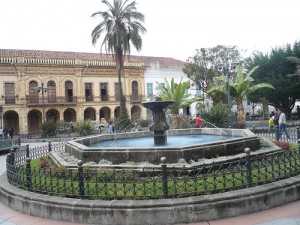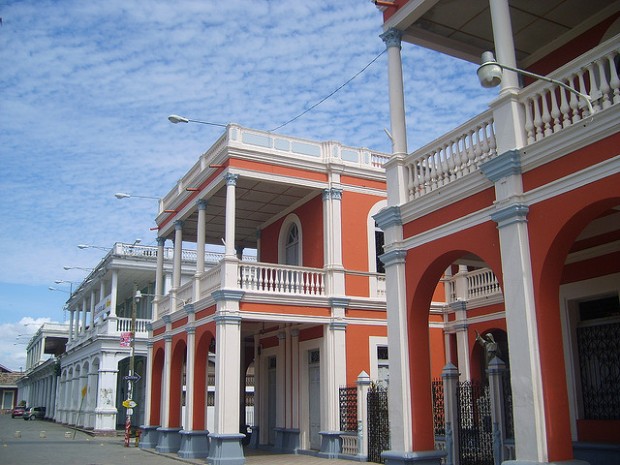
Retirement in Granada Nicaragua
For many of us, retiring overseas seems like a dream. Living out our twilight years in a new country sounds like an exotic adventure. It offers the chance to learn and experience new things, to get closer to nature, and to enjoy luxury at a much lower cost than at home.
Sadly, for most of us this dream is never realized. When it comes to the reality of moving overseas, we worry that it will be too expensive, too difficult, or too far from our family and friends.
This doesn’t have to be the case. Latin America is offering new and exciting opportunities for retirees to become expats. More and more people are flocking to the area every year, and it’s not hard to see why.
Nicaragua is becoming an increasingly attractive retirement location. The city of Granada is increasingly being described as one of the world’s best expat retirement locations.
Here are the five top reasons why you should retire to Granada, Nicaragua:
1. Granada is a beautiful, historic city with an awful lot to offer
Granada is a very popular city for expats for a number of reasons. It’s a stately, friendly city with great transport links and an interesting history. Property is also a brilliant draw for the city. Its Spanish colonial style homes are luxurious and affordable.
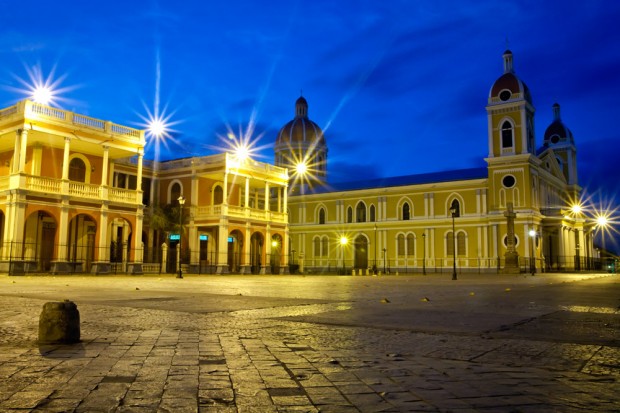
This year alone, 1.1 million tourists are expected to visit Granada, Nicaragua. They’re often drawn by the city’s picturesque cobbled streets and impressive historic churches. It’s also home to the Great Lake Cocibolca, which is one of the biggest lakes in the world. Imagine making a new life on the banks of the Great Lake, with the historic landmarks of the city just a stone’s throw away!
2. Nicaragua is a lot cheaper than you think
This life may sound idyllic, but it’s also within reach. If you have a retirement income of $20,000, you could make a very good life for yourself in the city. It’s estimated that living costs there are around $1,200 per month. For a more in depth look at how much it costs to retire to Granada, Nicaragua take a look at US News’ financial feature on the city.
3. It has great transport links
One of the huge benefits of retiring overseas is the opportunity it gives you to see more of the world. Nicaragua is well placed to visit nearby areas of Central and South America. If you’re concerned about being too far away from family and friends, you don’t need to be. The area is also only a two hour plane journey from Miami, which means that you’ll be able to enjoy regular visits to the States.
4. The weather is ideal
Many people choose to emigrate in their retirement in order to take advantage of some better weather! If that’s the case for you, Granada is a great choice. The weather in the city is great, and you can expect to enjoy temperatures in the 80s all year round. The lake the city is situated beside keeps a fresh breeze coming in, and makes sure that the city doesn’t reach the heat of other Nicaraguan cities.
The city also has a rainy season from May to October every year. During this time, there are thunderstorms every afternoon, which helps to keep the air fresh!
5. There’s a great expat community
It’s estimated that around 1000 expats live in Granada, and that the majority of those are retired. Though Granada has all the benefits of a big city, it also has much of the charm of a smaller community. The large expat community certainly helps: and you’ll find a wide range of clubs and activities waiting for your involvement.
One of the benefits of Granada is that it’s one of the safest places to live in Nicaragua. It’s a growing city, and it’s a very exciting place to be at the moment. In addition to the vibrant expat community, you’ll also be able to experience Nicaraguan culture first hand, and get a whole load of new experiences under your belt.
Thinking about making the move?
If you’re thinking about spending your retirement in Granada, Nicaragua, you don’t have to do it alone. There are professional companies on hand to help you get the best for your money, locate your new home, and get all the relevant paperwork completed.
Starting a new adventure in Nicaragua can be cheaper and easier than you think!
Nicaragua might be one of the world’s best kept retirement secrets among expats. But word is getting out, and Nicaragua is now a contender for Americans, Canadians, and Europeans thinking about retiring overseas.
Not too certain where to consider living in Nicaragua? Here are six places expats love in Nicaragua to get you started.
1. Granada
Granada is perhaps the most charming Colonial town of Nicaragua apart from Leon. It is a bustling city where you will have access to most, if not all, amenities as well as lots of restaurants, bistros, and a lively nightlife.
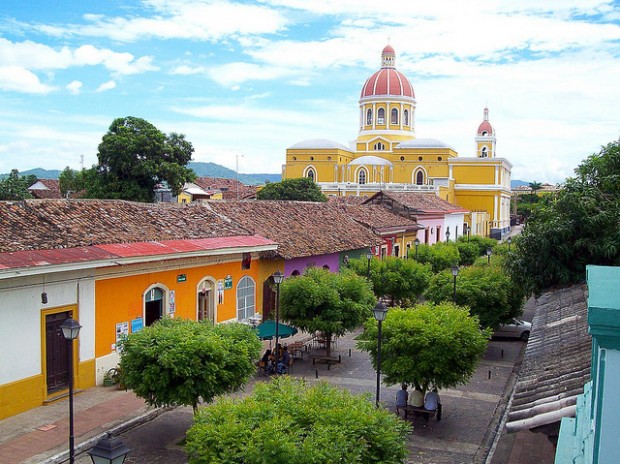
Adalberto.H.Vega
2. Leon
Leon is known by the locals as a young people’s town. It’s a busy, bustling, and attractive town and just a half hour drive away from the beaches on the west coast of Nicaragua.
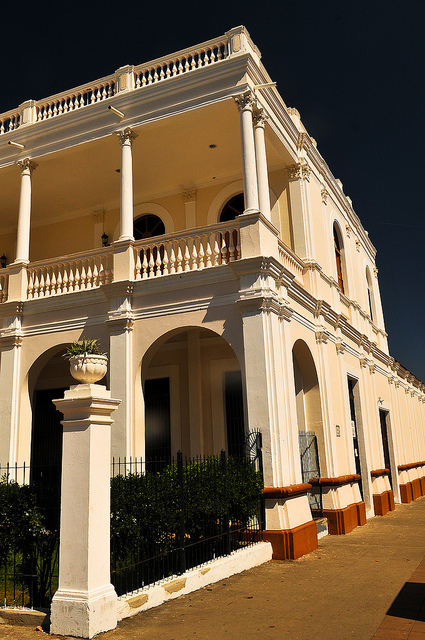
Jeff Maurone
3. San Juan del Sur
San Juan del Sur is one of the most developed beach communities of Nicaragua; if you are looking for a well-established expat community, this might be a good choice.

Sam Gibson
4. Masachapa
Masachapa is a seaside town based on an active fishing community. With great beaches and just enough restaurants and shops to keep you busy, it is not as well developed as San Juan del Sur.
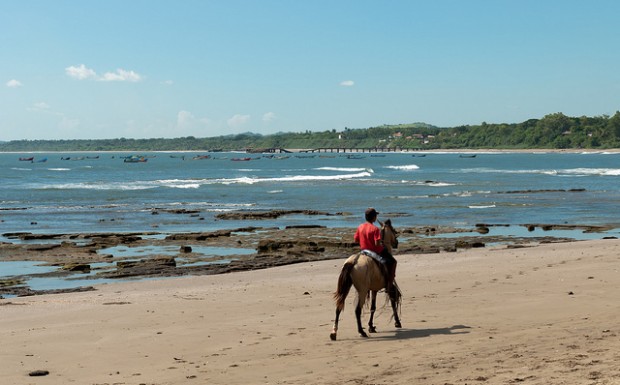
Arnoldo Castillo
5. Las Penitas
Even less busy than Masachap, Las Penitas is a beach community based on surfing. This is a very laid-back community, and being only a a half hour drive from Leon, that is a good thing, especially if you need a bit of city life now and then.
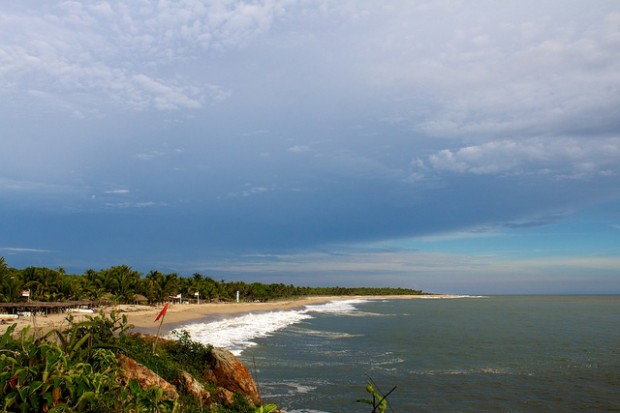
Daniel VMV
6. Poneloya Beach
Poneloya Beach is a true Nicaraguan vacation town, meaning it is deserted during the week and packed on Nicaraguan holidays. You’ll find a lack of many services here, but as with Las Penitas, people drive to Leon, a half hour away to get the things they need.
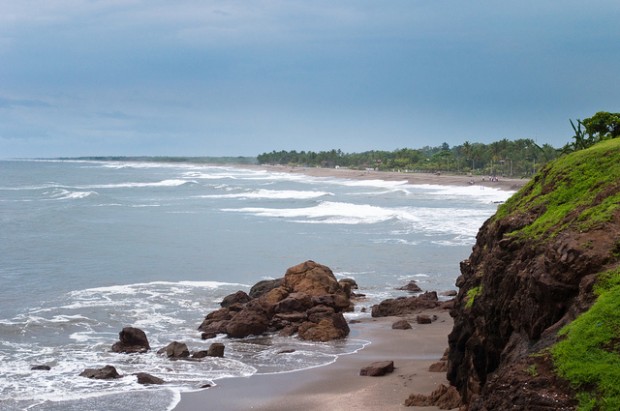
Arnoldo Castillo
Did we miss your favorite expat spot in Nicaragua? Be sure to let us know in the comment section below.
Nicaragua 3 Count, where we bring you 3 Nicaragua stories that you shouldn’t miss.

Photo Credit: Mareana
1. Pressed for Time? 6 Quick Ways to Enjoy Nicaragua
Nicaragua is fast becoming one of the “go-to” destinations for eco-tourism today. And one visit reveals a multitude of surprises for new-to-the-country visitors. But if you don’t have a lot of time to travel, here are six, quick ways to enjoy Nicaragua:
- Tackle two kinds of surfing.
- Hug a Güegüense statue.
- Get lost in a low-stress local market and come away with a keepsake.
- Throw a pot during an escorted Morgan’s Rock excursion.
- Walk on the wild side – visit a national park.
- Chow down on fresh, local food at bargain prices.
2. New Study Reveals Nicaragua Is a Great Place to Invest
A report from Financial Times shows Managua, Nicaragua is leading the way in Latin America with one of the best laid out strategies for foreign direct investment. Financial Times FDI Intelligence division ranks Managua third in the hemisphere behind Montreal and Toronto in the category of strategy for attracting Foreign Direct Investment. Managua was the only city in Central America to rank in the top ten in the investment strategy category, according to the American Cities of the Future 2013/14 report.
3. The One Thing Nicaragua Did Right for Tourism
Nicaragua has reduced its minimum amount of investment required to receive tax exemptions to $25,000 as a means to opens up big opportunities for those interested in investing in the nation’s ever-expanding tourism sector. The new tourism investment minimums to enjoy tax incentives are raising a cloud of excitement among small tourism entrepreneurs who hope to collect the medium and long term benefits of this new condition, with improvements mainly in the infrastructure business.

Joshua Berman
Living next door to tourism giant Costa Rica and the up-and-coming Panama, and due to the common misconception that Nicaragua is still unsafe for tourists, this little country hasn’t been receiving the attention it deserves when it comes to expats.
While it is true that Nicaragua has been getting more attention in recent years, having been featured on the covers of some travel magazines, Nicaragua remains one of Central America’s least visited countries.
But according to Jennifer Taylor-Jones, the Vice President of Product Development at JetSet Vacations, this somewhat forgotten Central American gem just might be stepping into the limelight.
Why Nicaragua?
As expats continue to look towards Central America as a possible place for retirement, many are searching for the next big thing, and in 2013, Nicaragua just might be that thing.
Tucked between Honduras to the north and Costa Rica to the south, Nicaragua was not always the expat friendly, land-of-plenty that it is today.
So what is it about Nicaragua today that is drawing expats in?
A sense of discovery
Many are coming to Nicaragua to get away from heavily tourist concentrated areas. They like the idea that Nicaragua is still relatively unknown and that it has not yet been pegged as a tourist hotspot, a definite negative attribute to those seeking peace and serenity.
The wonderful aspects of Nicaragua have not yet been revealed to the public on a global scale and in a way, it can be theirs to discover.
But although expats want to go somewhere new, they still want to go somewhere that is safe and expat friendly. Today, Nicaragua fits both criteria.
Why now?
In recent years, Nicaraguan officials have been nominating significant funds in attempt to attract North Americans to their country. The end goal is to make Nicaragua the third most visited country in Central America behind Costa Rica and Panama.
Much of this money will go towards helping outsiders learn more about Nicaragua by educating them on the country’s current political and economical state, factors that have made tourists and expats wary about Nicaragua in the past.
In fact, according to a report published by the Financial Times, Nicaragua ranked third after Montreal and Toronto in the category of Strategy for Attracting Foreign Direct Investment.
And changes are being made. One expat lived in Nicaragua in 2007, and during that time, claimed that the road connecting San Juan del Sur to the Pan American highway was nearly un-drivable due to massive potholes. When she returned on a recent visit, she was welcomed by a smooth stretch of maintained pavement in place of the ripped up road.
Aside from the improved roads, she was also pleasantly surprised to find internet access across the country and that the capital city of Managua had expanded into an urban metropolis with everything and anything an expat could possibly need.
So what can an expat coming to Nicaragua for the first time expect today?

san-juan-del-sur-psd photogrpahy
Perfect weather, beautiful beaches free of colossal resorts, towering volcanoes (including the still active Masaya volcano), Lake Nicaragua (the largest lake in Central America), surfing town San Juan del Sur, and colonial cities like Leon and Granada.
And best of all, it won’t cost an arm and a leg to experience all that Nicaragua has to offer.
Budget friendly
Like many other Central American countries, the cost of living in Nicaragua is low and this is an obvious perk to any expat looking to retire on a budget.
Real estate in Nicaragua is extremely affordable. A colonial home in the city of Granada can be purchased for under $50,000.
Renting is also affordable, but of course prices will fluctuate depending on where in Nicaragua you choose to live. In San Juan, a relatively touristy area for Nicaragua, a 1-2 bedroom apartment can cost between $250-$600 a month, although, as the price goes up, things like utilities, internet, cable, and housekeeping are often included.
Covering rent, utilities, cable/internet, groceries, and entertainment, a couple could live comfortably in Nicaragua for around $1,200 a month, a meager amount when compared to prices back home.
On the other hand, a couple could live a simple life on as little as $750 a month and a life of luxury, including a spacious house and a maid, for around $2000.
Get there before the crowds do
As Nicaragua continues to gain recognition, it won’t remain unknown for long. If you have been thinking about heading to Central America, consider Nicaragua, the favored hot spot for expats in 2013. With all of the wonders of Central America, an exceptionally low cost of living, and a portion of the crowds, Nicaragua is the perfect spot to relax and live the laid back lifestyle that we all crave.
Intransit.tv takes us on a video tour of Nicaragua’s second colonial city, Leon. Join in with the locals who are hosting the city’s colonial rival, Granada, in a baseball match and enjoy some authentic Nicaraguan food with our video guide, Peter.
Leon, Nicaragua is the second largest city in Nicaragua. And after Granada, which is better preserved, León has the best colonial architecture in Nicaragua.
Visiting here means you are relatively on your own. There will be the sporadic backpacker here and there, and as of late, tour groups have taken to visiting as well, but this is still a university town, and off the beaten tourist route.
What could be better than taking a trip to the gorgeous tropics of Central America? How about making the trip affordable?
Due to the booming tourism industry, this may seem easier said than done, and unfortunately, many once budget-friendly destinations, are no longer so. But that doesn’t mean it’s not possible.
Each year tourists from around the world come to experience the tropical climate, Latin culture and exotic beauty of Central America, but many don’t realize that it can be done on a budget.
Costa Rica, Panama, Nicaragua, and El Salvador are four popular Central American countries that can be truly experienced without breaking the bank in the process.
First Stop, Costa Rica
The most popular tourist destination on the list, and arguably the most tourist friendly, Costa Rica can tend to be a bit pricey But don’t worry, there are ways to keep your costs down.
In big cities like San Jose, prices will typically be higher, so hop on a bus and head for one of the smaller beach towns. A five hour direct bus to a town like Santa Theresa will cost you around ten dollars.
Remember to exchange your money into the local currency colones, as usually only expensive items/places accept American money. Seek out cheap accommodations at a hostel (around ten dollars) and start exploring the beauty of Costa Rica.
On to Panama

Photo: Martha de Jong
Although the tourism industry here is not quite as developed as their northern neighbor Costa Rica, Panama is just as beautiful and the prices are often lower. Again, buses will be the cheapest mode of transportation and hostels your best bet for reasonably priced accommodations (around twelve dollars for a bed). As a perk, many hostels will have communal kitchens, so take advantage of the local market and cut another cost by cooking your own meals. If cooking on vacation isn’t for you, try to avoid restaurants aimed at tourists and instead look for street stalls and small cafes.
Next It’s Nicaragua

Photo: McMallan
Just north of Costa Rica, Nicaragua, known as the land of lakes and volcanoes, is cheaper and attracts a lot less tourists. In fact, you can catch a bus from Costa Rica to Nicaragua for just a few dollars, but remember, you will have to pay a fee of seven or eight dollars to get into the country. Once you are in Nicaragua, exchange your money into córdoba’s and head for small towns like El Trasito, Popoyo and Playa Maderas to soak up the sun and experience the amazing surf. If you visit Isla de Ometepe, be sure to hike up the double-volcano nestled in a lake filled with fresh water sharks, or you can try remote Little Corn Island for cheap kayaking and snorkeling.
Last Stop – El Salvador

Photo: Amber and Bryan via flickr
While El Salvador may not be as popular a tourist destination as the others, most who visit are pleasantly surprised. The people are friendly and welcoming and there are many wonderful, and cost efficient things to enjoy, like taking a trip to the beach town of El Tunco just an hour from the capital San Salvador. Yes the food is a little pricey, but the hostels are cheap and the surfing and swimming is unbeatable. Explore San Salvador on a five dollar bike tour that takes place every Thursday night, or take a leisurely stroll around the city to check out the politically-charged street art.
Ready to go? Remember these tips:
- Take advantage of local transit. While bus rides may be longer, the cost is substantially less.
- Eat like a local. Avoid tourist-targeted restaurants and look for low-key local spots.
- Make the most of happy hour.
- Visit “free” national parks for hiking and observing nature and wildlife.
- Stay in a hostel. Typically group and private rooms are offered.
- Surf and swim – it’s free!
It’s a common misconception to think that a good holiday means an expensive holiday. Cliché but true, the best things in life are free, especially when you are somewhere as beautiful as Central America. The sun, the mountains, the beaches, the surfing, it’s all free and all unforgettable. If you are not overly concerned with five star transport and accommodation, Costa Rica, Panama, Nicaragua, and El Salvador can all be yours at a reasonable cost. So do your research, book your plane ticket and get ready to discover the wonders of Central America without putting a dent in your wallet.
The Travel 3 Count, where we bring you 3 travel stories that you shouldn’t miss.
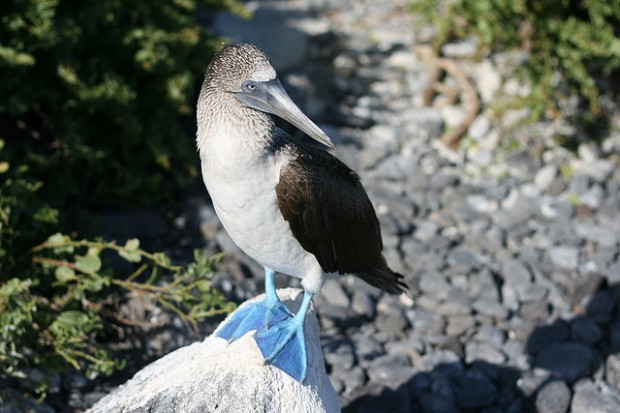
Ecuador’s Galapagos is a must see destination in 2013.
1. Destinations to Watch in 2013
First Up: Conde Nast Traveller’s destinations to watch in 2013 list includes some of Latin America’s gems. Here are the top Latin America destinations to watch in 2013.
- Panama. No longer just a place where ships pass in the night, Panama is the cool Caribbean destination of the moment.
- Mexico’s Mayan Riviera. The Mayan Riviera is set for a bounteous year in 2013.The vibe is deliberately hippy-chic, lo-fi by day and up-tempo at night and is a great place to stay for discerning travelers seeking barefoot luxury.
- Ecuador’s Galápagos Islands Galápagos is one of the most fascinating places on earth, an evolutionary melting pot. It’s already at the top of many wishlists, for the intrepid and for animal-lovers.
2. 21 Cheap Places to Visit… Where Does Latin America Come In?
Up Next. Want to travel, but don’t want to spend lots of money? These 21 cheap travel destinations let you get the most bang for your buck. Want to try it? Tim Leffel’s can help. His mission is to show cheapos how to find travel destinations they can afford.
Where is his favorite cheap spot in Central America’s? Ometepe, Nicaragua.
In Nicaragua, it’s a wide-open blank slate, because there isn’t much tourism outside of Granada and San Juan Del Sur. That means there are but a few nice hotels and restaurants and your main mode of transportation is mostly on chicken buses. But if you want cheap and exciting, Nicaragua is your choice.
3. 6 Must See Latin American Destinations
Finally: With over 7 million square miles to cover and 430 million people to meet between Central and South America, deciding where to start your Latin American adventure can be a little tricky, but with Bootsnall Travel Guide’s six must-see Latin American destinations, the planning just got easier.
- 1. Quito, the Amazon, and Cuenca – Ecuador
- 2. Rio de Janeiro and Iguazu Falls – Brazil
- 3. Lima, Cuzco, Lake Titicaca and Machu Picchu – Peru
- 4. Buenos Aires to Santiago via Bariloche – Argentina & Chile
- 5. La Paz, Sucre and more – Bolivia
- 6. San Jose to Panama City – Costa Rica & Panama
Adventure-lovers rejoice! These top sports are certain to deliver pure beach bliss, idyllic islands, curious creatures, and small towns packed with charm.
Granada, Nicaragua, has a lot to offer visitors. Rich in culture and history, Granada is a much sought-after travel destination. It’s a great jumping off point to tackle other little known, but adventurous day trips. Here are 5 to get you started.
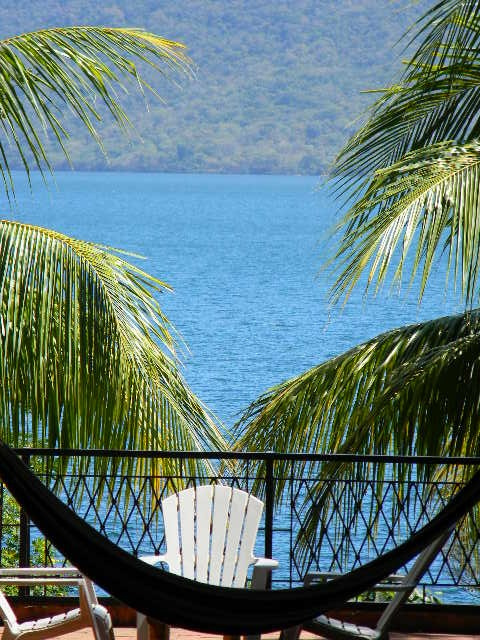
Take a swim in a crater lake, Laguna de Apoyo outside Granada, Nicaragua.
1. Take a Swim in Crater Lake
Granada is HOT. And though it’s on the shores of Lake Nicaragua, it’s nowhere that you want to swim. But head outside of Granada to Laguna de Apoyo, an ancient volcanic crater and rimmed by green hills. Along its edge are many hostels, most of which will allow you to use their beaches. Admission’s cheap, around 6 bucks.
2. Climb a Bell Tower for a $1
For just a buck, you can ascend Iglesia la Merced. Built in 1534, sacked and burned by Henry Morgan in 1670, then rebuilt, the church itself is pretty, but climb to the top for the single most spectacular view in Granada.
3. Hike an Active Volcano
Volcan Mombacho is the 4,400 foot volcano that towers over the city of Granada. It’s beautiful, green, and begs to be climbed. Though it’s active, it hasn’t erupted in over 500 years, so have no fear. There are three different trails to choose from, each varying in difficulty. The guide costs $15 for a group of up to 5 people, or $20 if you want your tour in English.
4. See a Stone Idol Carved in Bedrock
 About 15 miles south of Granada sits Zapatera, an extinct volcano surrounded by Isla el Muerto and a dozen or so other islets. These islands were enormously important to the Nahuatl people, who used them primarily as a vast burial ground and sacrifice spot. The sites of La Punta de las Figuras and Zonzapote are particularly rich in artifacts and have a network of caves that have never been researched. Ask around and seek out the petroglyphs carved into the bedrock beaches of Isla el Muerto.
About 15 miles south of Granada sits Zapatera, an extinct volcano surrounded by Isla el Muerto and a dozen or so other islets. These islands were enormously important to the Nahuatl people, who used them primarily as a vast burial ground and sacrifice spot. The sites of La Punta de las Figuras and Zonzapote are particularly rich in artifacts and have a network of caves that have never been researched. Ask around and seek out the petroglyphs carved into the bedrock beaches of Isla el Muerto.
5. Buy a Cheap Souvenir at a Local Market
Not too adventurous, if you speak Spanish, but Masaya Market is where the Nicaraguans shop. So most vendors only speak Spanish. It’s the best place to buy souvenirs in all of Nicaragua. With aisles upon aisles of Nicaraguan delights, and unlike in many souvenir markets, you barely have to bargain. It’s not a touristy spot, so you’re going to get a real feel of a true Nicaraguan market.
Further Reading on Granada
For an in depth look at Granada check out our Granada Starter Kit, a 64 page book packed full of info on Granada.

Cuenca, Ecuador Named Top Expat Destination for 2013
The world’s top retirement spot? In truth, it depends on you. There are many appealing options for a new life in retirement as an expat, as many people are now looking for ways to stretch their dollars. It makes sense, living expenses can be cheaper, cultural experiences richer and the lifestyle more satisfying as an expat.
The top retirement spots for 2013 have a variety of cultural offerings, climates, and lifestyles. Each destination is desirable in its own way, but they all offer something increasingly hard to come by at home: A good quality of life for a reasonable price.
Here is a guide to the best places to retire overseas in 2013:
1. Ecuador
Living on $1,600 a month including rent isn’t unreasonable in a place like Cuenca, Ecuador. Buying a house or condo near the water could cost you less than a quarter of popular U.S. destinations of similar climate. When you make the move, Ecuador allows you to import your household goods duty-free, and with its new, simplified visa process, it’s no wonder Ecuador tops the list as a best-value retirement paradise.
But for many, the true draw is the perfect climate. The nation lies on the equator. The beaches are tropical, but up in the Andes, the weather is mild and spring-like year-round. Best bonus yet, it’s one of the best countries for an expat business start-up.
2. Panama
In Panama’s capital city you can have all the U.S. comforts of a big city, including outstanding healthcare, restaurants, and daily activities. On a monthly budget of $1,700 to $2,500 a month you could eat out regularly, have a housekeeper come in a few times a week, and enjoy movie dates a few times a month.

View of Panama City skyline, a top expat destination for 2013
Panama’s major draw is its Pensionado (pensioner) visa, where qualified retirees achieve residence status fairly quickly. The program entitles visa holders to discounts on medical treatment, dining, movies, and more. Most expats in Panama regret they didn’t come sooner, as many say they chose Panama for the friendly people…its rainforest…plentiful beaches and the choice of secluded or city living lifestyles.
In Panama it’s possible to put a toe in the Pacific after breakfast and in the Atlantic before dinner…on the same day. There are cloud forests for bird watching, such as the resplendent quetzal, and even orchid gazing, all in the same weekend.
3. Malaysia
Malaysia is Asia’s Panama. That is to say, this country is a regional and a global hub, for trade, for business, and for culture. Malaysia is a multi-ethnic and multi-cultural country which attracts many tourists annually.
Penang, Malaysia offers expats an affordable living under $2,000 a month in what is considered “luxury housing” in the states. Here, an expat can eat out often and enjoy all the things the city has to offer along with top notch medical care at an affordable price.
Malaysian expats feel the country has everything. Its weather is a tropical 82 F all year round and its beaches, islands, and jungles are pristine. It has some of the region’s best street food, great restaurants, bars, shopping malls, and movie theaters—and it’s all affordable.
4. Mexico
Mexico’s colorful and vibrant culture does rank high with expats who live here…look deeper and Mexico has much to offer. Mexico is an easy, convenient choice for many expats who are seeking a first-world country at bargain prices. No wonder a million or more expats make Mexico their home.
Today’s Mexico offers modern highways and airports, cable and satellite TV, Internet, and many other items expats enjoy at home. Want your “big” U.S. lifestyle abroad, you’ll get it in Mexico with an overall cost of living at about half of what you’d pay in the U.S. or Canada.
And one of Mexico’s biggest pluses is its sheer size and variety. If you want beach, Mexico has thousands of miles of it—chic resorts, sleepy beach towns, and everything in between. Prefer cool, mountain scenery? Mexico has that, too. More likely than not, whatever you’re looking for in a retirement destination you will find it in Mexico.
5. Costa Rica
Costa Rica is where you go to live the lush life. It is lush with nature—misty rain forests, extraordinary wildlife, active volcanoes, and fabulous beaches—as well as such comforting amenities as malls, supermarkets, restaurants, museums, and social clubs.
U.S. retirees have flocked here for years, drawn by its mild climate, prosperity, literacy rate, health care, and, significantly, stable government. Another plus: Costa Rica’s commitment to a thriving natural park system that is second to none in Latin America. This is as biodiverse a country as you’ll find anywhere. The country offers micro-climates, meaning you can fine-tune your weather by moving up and down the hills.
Though not the bargain it was a decade ago, Costa Rica continues to draw moderate-income retirees, who meet the country’s requirement of income of $1,000 per month from Social Security or a pension. Best part, residence is easy enough that just about anybody can do it. Residents are eligible to join the universal health-care system, known as Caja. The cost, based on income, can be as low as $49 a month. After that, care is free.
6. Nicaragua
Want a budget-friendly retirement destination? Think Nicaragua. Geographically, the nation is blessed with two long coastlines and two big lakes, plus volcanoes, highlands, rain forest, and rivers. In this manner, it has everything Costa Rica and Panama have, but it’s less discovered and developed and available to adventurers and eco-travelers at bargain rates.
Property values have fallen significantly in this country over the past several years, thanks to Ortega’s re-election and then the global recession. As a result, you can buy one of Granada’s classic Spanish-colonial haciendas for $50,000 or less. A couple could live comfortably in this city on a budget of $1,200 per month.
Best of all, its lower cost of living does not mean you have to sacrifice the quality of life, in fact, it’s possible to live in Nicaragua with even more luxuries than you were accustomed to, simply because the prices are so low.
Retired Expat Communities
All these destinations have large expat communities, so doing your research can put you among other people like you; with similar interests. Learning a foreign language will probably be a requirement; but again if you have a sense of adventure, and don’t want the typical cookie cutter retirement this could be something new and stimulating.




















